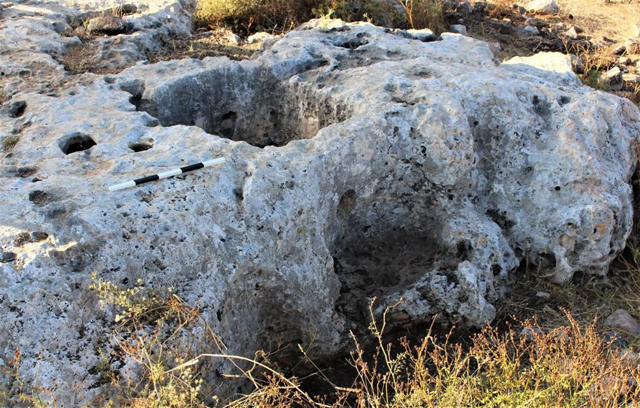AMMAN — Baja’a, located near Petra in southern Jordan was an ancient centre of olive oil production. Olives with their strong pits have been crushed in a mill or grinder, the so called olive crusher. Consisting of a circular bowl with a high rim and a hole in its centre, a wooden pole inserted into this hole serves as axis for the mill stones, one or for a better efficiency two cylindrical stones connected with a long horizontal lever, which are turned around inside the bowl by manpower or in bigger mills by donkeys.
“From the crushing bowl the first batch of extracted oil is flowing through a spillover valve into a collecting vessel. The olive crusher or mill is an indispensable part of the olive oil production unit,” noted a Swiss researcher Ulrich Bellwald, who spent decades in Petra studying the Nabataean hydraulic system, wine and olive presses.
The millstones of the olive crusher are massive, heavy lime stone boulders and may not easily be displaced, Bellwald continued, adding that, however, in the survey area only one single fragment of such has been found so the existence of olive oil production units may flatly be negated.
“Furthermore it has to be pointed that olive oil presses generally do not have the shape and dimensions of the wine presses found in Baja’a. An olive oil press normally consists of a square or circular pressing platform with an elevated slab of the same shape on a pedestal. The slab has a surrounding groove directing the out flowing oil to the nose-like spout in the middle axis of the front side. From the spout the oil flows directly into a vessel standing on the floor or inserted into the ground,” Bellwald elaborated.
Furthermore, for the pressing process the olive-mash was to pile further up on the ground slab between wicker-work mats made from reed, he continued, adding that the olive mash was then pressed by means of a horizontal wooden lever, pulled down with weights or windlasses.
“The short description of the layout of an ancient olive oil press shows clearly that such an installation is with all its components machinery set up above ground level. Therefore, an olive oil press does not need any treading platform, nor filter basin or fermentation tank hewn out from the bedrock,” Bellwald explained.
The area of the actual village of Wadi Musa was and still is full of ancient olive mills and presses or remains of such installations, Bellwald said.
